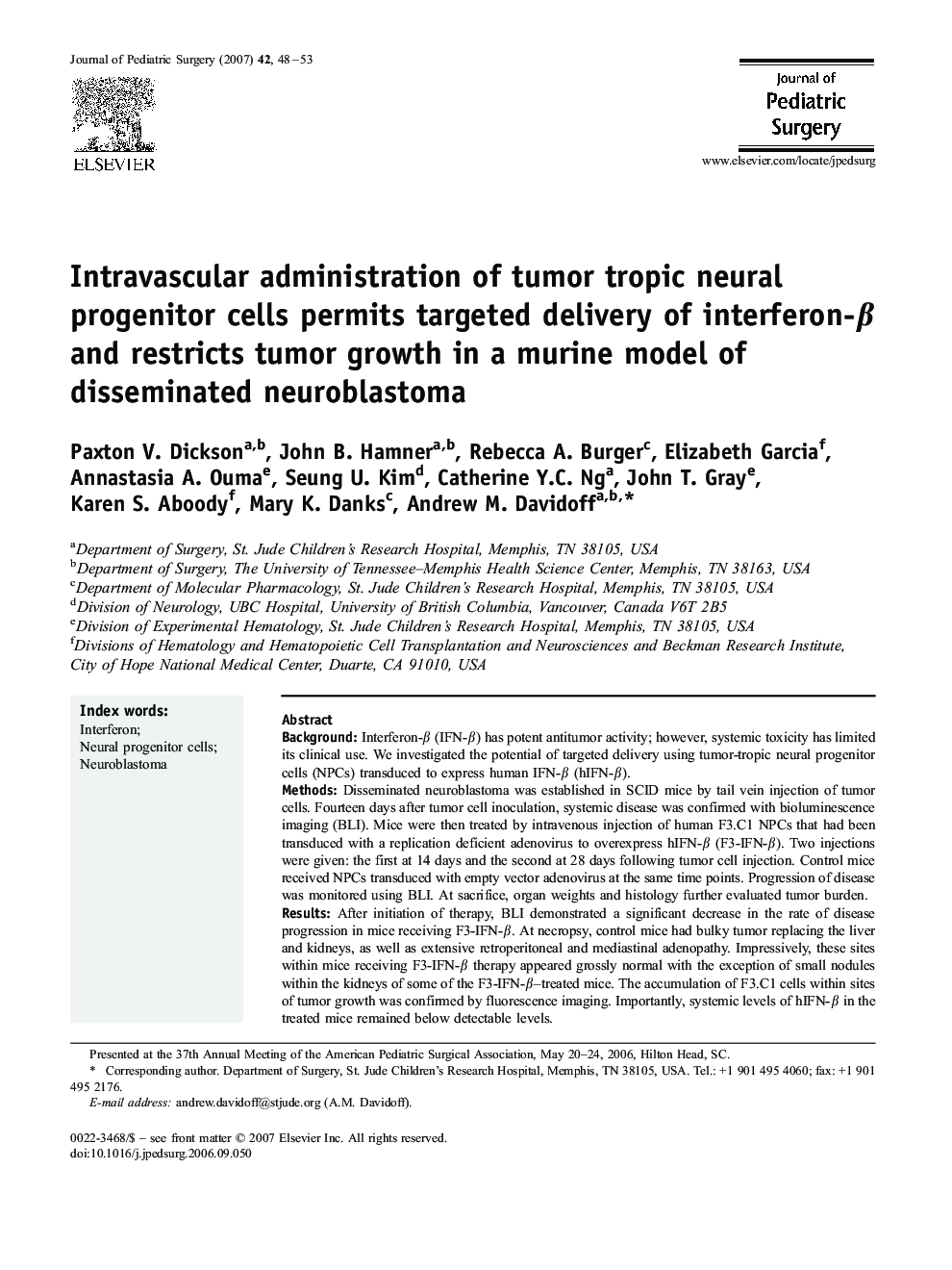| کد مقاله | کد نشریه | سال انتشار | مقاله انگلیسی | نسخه تمام متن |
|---|---|---|---|---|
| 4160105 | 1273838 | 2007 | 6 صفحه PDF | دانلود رایگان |

BackgroundInterferon-β (IFN-β) has potent antitumor activity; however, systemic toxicity has limited its clinical use. We investigated the potential of targeted delivery using tumor-tropic neural progenitor cells (NPCs) transduced to express human IFN-β (hIFN-β).MethodsDisseminated neuroblastoma was established in SCID mice by tail vein injection of tumor cells. Fourteen days after tumor cell inoculation, systemic disease was confirmed with bioluminescence imaging (BLI). Mice were then treated by intravenous injection of human F3.C1 NPCs that had been transduced with a replication deficient adenovirus to overexpress hIFN-β (F3-IFN-β). Two injections were given: the first at 14 days and the second at 28 days following tumor cell injection. Control mice received NPCs transduced with empty vector adenovirus at the same time points. Progression of disease was monitored using BLI. At sacrifice, organ weights and histology further evaluated tumor burden.ResultsAfter initiation of therapy, BLI demonstrated a significant decrease in the rate of disease progression in mice receiving F3-IFN-β. At necropsy, control mice had bulky tumor replacing the liver and kidneys, as well as extensive retroperitoneal and mediastinal adenopathy. Impressively, these sites within mice receiving F3-IFN-β therapy appeared grossly normal with the exception of small nodules within the kidneys of some of the F3-IFN-β–treated mice. The accumulation of F3.C1 cells within sites of tumor growth was confirmed by fluorescence imaging. Importantly, systemic levels of hIFN-β in the treated mice remained below detectable levels.ConclusionsThese data indicate that in this model of disseminated neuroblastoma, the tumor-tropic property of F3.C1 NPCs was exploited to target delivery of IFN-β to disseminated tissue foci, resulting in significant tumor growth delay. The described novel approach for effective IFN-β therapy may circumvent limitations associated with the systemic toxicity of IFN-β.
Journal: Journal of Pediatric Surgery - Volume 42, Issue 1, January 2007, Pages 48–53